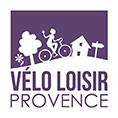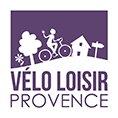Perched villages by bike
« The villages, nestled in the hollow of our beautiful Luberon or perched like lighthouses, will require you to watch or look up to fully experience this unforgettable beauty. They will welcome you for a restful daybreakon their shaded squares near their fountains. Follow our small picturesque and serene roads by bike, let yourself be charmed: a true pleasure». Sylvie Palpant, Managing Director of Vélo Loisir Provence.
11 points of interest
 Produits du terroir
Produits du terroirThe lavender honey, a rare sweetness?
The lavender honey has its reputation and is one of the most popular honeys. In the PACA region, it represents 50% of honey production. But this popular honey is becoming scarce. This is due to the lavender diseases during droughts for example, or a strain of bee colonies; we can not explain the variations in production that this delicious sweet treat undergoes today.
 Savoir-faire
Savoir-faireReconnecting with old cultures
The Einkorn wheat, the Miller wheat from Apt or the Florence Aurore wheat were cultivated by our ancestors for their weather resistance. They had slowly been replaced by new varieties, with higher yields but very phytosanitary product-consuming. Following the drought in the land and a consumer demand for less gluten-rich breads, farmers have brought back these forgotten varieties.
 Patrimony and history
Patrimony and historyTroglodytes (underground dwellings) of Beaumettes
Just above the village, the troglodyte site of Beaumettes is part of the most famous sites of the Vaucluse. These underground structures lining up on nearly 130m represent a real little hamlet. Houses, farming outbuildings including a dovecote, ponds and cisterns are built around a castle and the Romanesque chapel of Sainte-Foy. There are 3 types of troglodytes: the closing of a natural orifice, constructed caves (the case in Beaumettes) and sheltered structures built against a hill.
 Water and rivers
Water and riversThe Calavon, rebirth of a river
Until 1992, the Calavon was presented as one of the most polluted rivers in France, mainly by the industrial waste of food-processing factories of Apt. Since then, thanks to the joint efforts of all water users who rallied for a coherent and overall river management, this river which was once "murdered" is now revived. Its inclusion in 2005 in the European network Natura 2000, identifier of important natural sites for biodiversity, goes in this direction.
 Flora
FloraThe Water Primrose, a nuisance plant
Exotic species introduced into an ecosystem, sometimes unintentionally, represent the third cause of loss of biodiversity. The Calavon river is here affected by the Water Primrose, an aquatic plant from South America. It spread in Europe in the 19th century through ornamental ponds where it was used as an ornamental species for its yellow flowers. Very invasive, it hinders the circulation of aquatic fauna, eliminates aquatic plant habitats, and can cause aquatic asphyxiation.
 Panorama
PanoramaBetween terraces and terraced fields...
The Calavon valley is structured by the Calavon-Coulon river flowing between the massifs of Monts-de-Vaucluse to the north and Luberon to the south. This valley, bordered south by the foothills of the Luberon is utilized by agricultural activity (cherry trees, vineyards and orchards). It includes a former dry stone heritage of great wealth (terraced fields, bories ...), unfortunately escheated. Enjoy the plots and terraced fields of the many hilltop villages that instersperse this walk.
 Produits du terroir
Produits du terroirTruffle in the Luberon
The truffle, "Rabasso" in Provençal, is a fungus that lives on the roots of holm oaks or white oaks but also Aleppo pines ... In winter, truffle hunters and their dog go out in search of the famous "black diamond". The Vaucluse department is the first French producer and Provence produces more than three-quarters of the national production. In Ménerbes, you can go to the "Maison de la Truffe et du Vin" to learn more.
 Produits du terroir
Produits du terroirOlive oil, a Mediterranean symbol
Imported in Provence by the Phoenicians, who founded Marseille 600 BC, the olive tree spread during the Roman era in the south of France. The olive harvest takes place from October to February. Depending on the variety, it usually takes 5 to 7kg of olives for a litre of oil. Olive oil is emblematic of the Mediterranean diet and is found in many typical dishes such as Tapenade (a traditional Provençal olive spread). In the Luberon, several mills will offer their olive oils, each with its own personality.
 Patrimony and history
Patrimony and historyOppède-le-vieux and the agricultural plain
Between the northern slope of the Petit Luberon and agricultural plain of the Calavon valley, the landscaped area around Oppède is remarkable and fragile. To protect the views of the old village, the Luberon and the agricultural plain, Oppède has considered the future of the outstanding farms by implementing construction and evolution rules respectful of the architectural and landscape heritage. The commune would like to avoid suburban commoditization and to preserve its built heritage.
 Fauna
FaunaPetit Luberon, the Mecca of biodiversity
Le Petit Luberon is part of the European Natura 2000 network like 8 other sites of the Luberon Park. Special efforts for the protection and management aimed at preserving the quality of the ecosystem and their remarkable biodiversity. A decree for the biotope protection from 1990 preserves the tranquillity of raptors by banning the practice of rock climbing and aerial sports (Ultralight aviation, paragliding, delta plane) as well as wildlife photography.
 Geology
GeologyHeating quicklime in Robion
The sylvan theatre (also known as greenery theatre) was built at the foot of the excavated face of a former quarry. Beautiful white limestone was formerly extracted from there. It was heated in the big kiln nearby at elevated temperatures between 900 to 1000 °C, turning into quicklime, used for construction and agriculture. The kiln which was built in 1859 was abandoned in 1914. The quarry was operated until 1935. Many towns had a lime kiln but very few are as beautiful and well preserved.
Description
Opposite the old railway station (now a cultural centre), go to the left, take a right and then a left to reach the actual starting point of the long-distance cycling route at the end of the Tourail avenue. Take the EV8 to the centre of Beaumettes and reach the underpass on the right.
1 - Leave the long-distance cycling route and go onto the D29 across. Cross the Calavon, go straight at the 1st and 2nd junctions towards Ménerbes. 100m further, turn left on the Heyrauds path. At the next crossroads, plunge to the right on the Roumiguier path and then go up to the left. Opposite a large stone house, turn left, then 75m further, turn right on the Grande Bastide path. Come out on the D103, take it on the right for 300m then 2 lefts, go under the cemetery, through two hairpin bends and up to the end of the long ramp. Enter straight into the streets of Ménerbes.
2 - At the stop sign, turn right and then left onto the Marcelin Poncet avenue. Follow the marked route"Autour du Luberon à vélo'' and glide to the D3. Go down to the right then take a lower turn to the left on the D188 towards Oppède. After 1.7km, exit the D188 and go straight. Go down to the right, pass the covered wash house, then continue. At the next junction, take the rise across then switch to the right, then after a banked turn, come out on the D178. Climb to the left and reach the centre of Oppède-le-Vieux.
3 - Pass the village square and down the road from the car park below (caution, one way road except for bikes).!). Turn left at the Soulevan hamlet. Take the paved path of La Blaque. Continue to the right on the Vertu path, then do not miss the Ara path to the left which comes out on the corner of the cemetery of Maubec.
4 - Turn left and after the church, climb the slope of the old village. At the top, turn left. Turn and go down to the right. Continue straight on 1km / less than a mile then turn left on the Peirou path. Come out on the Marronniers path after the cemetery of Robion.
5 - Take a sharp left, go up the path and continue left on the Luberon avenue. Pass in front of the sylvan theatre and take a turn until the church square. Turn to the left, pass the town hall and down the Oscar Roulet street. Continue straight until the traffic light. Cross the D2 and continue across. At the roundabout, turn right at "Avenue de la Gare". Shortly after crossing the Carpentras canal, enter right onto the long-distance cycling route.
6 - Take the EV8 to Coustellet and thus return to the starting point.
- Departure : Cultural centre of the railway station, Coustellet
- Arrival : Coustellet
- Towns crossed : Maubec, Robion, Oppède, Ménerbes, and Beaumettes
Forecast
Altimetric profile
Recommandations
This route follows streets opened to public traffic; under all circumstances,so it is therefore essential to respect the highway code. Wearing a helmet is highly recommended, for children as well as adults.!
Information desks
House of the Luberon Regional Nature Park
60, place Jean Jaurès, 84400 Apt
In the heart the old town centre of Apt, the House of the Luberon Regional Nature Park welcomes you in a town house of the 18th century. The permanent exhibition of the geology museum has a rich collection of fossils evidencing the geological history of the Luberon.
On sale at the shop: books, maps, guidebooks, games, posters...
Open Monday to Friday from 8:30 am to 12:00 pm and from 1:30 pm to 6 pm (and on Saturday, depending on the program). Free admission.
OTI Luberon Coeur de Provence
Place François Tourel, 84300 Cavaillon
Access and parking
At 9.5km east of Cavaillon, through the D2.
Parking :
Accessibility
Source

Report a problem or an error
If you have found an error on this page or if you have noticed any problems during your hike, please report them to us here:



